The Cook Creek lookout was designed in 1927 by Paul E. Meyer, an engineer for the Hobi Timber Company. This giant Douglas Fir tree was topped at 179 feet, stripped of its bark, and had 3-foot steel rods driven in a winding, circular pattern up the tree. A steel cable wrapped through the eyes of the rods around the tree served to tighten them to the tree as well as serve as a handrail. A 7x7 foot cab was mounted to the treetop, with the top of the tree used as the firefinder stand inside the cab. Paul Meyer, L.C. McKeever and Bureau of Indian Affairs employees helped construct it. The lookout manned by BIA employees for approximately 10 years. Sometime around 1955, the tree snapped and for many years, a tall snag was remaining. By 1996 the snag was only about 35 feet tall. Most recently, it seems a fire burned the summit area and the snag was cut about 10 feet above the ground.
Elevation: 179 feet
Elevation Gain: 100 feet
Distance: Under a mile
Landowner: Quinault Tribe
Grays Harbor County
Washington Lookouts
Access:
Route:
No gates exist but non-tribal persons should contact the Quinault Tribe and ask for a permit. From Highway 101, drive about 4 miles west on the Moclips Highway to a right turn on an unsigned road. Then use map below. Distance accessed by vehicle will depend on brush removal the previous season.
The old road to walk is getting brushy (2017). The final portion is on an old trail that is also brushy in places.
Around 1929
Cook Creek Lookout (Pete Millers Treehouse)
Greater Detail from June 1929: The Timberman- by Henry B. Steer
"A Douglas fir tree, well over 200 feet in height and about six feet in diameter, standing on a high knoll overlooking the entire northeastern part of the Quinault Indian Reservation in Grays Harbor County, Washington, has been made into a unique fire lookout station by a co-operative arrangement between the Hobi Timber Company and the forestry branch of the United States Indian Service. The lookout station proper is believed to be the highest from the ground in the United States, for the floor is 170 feet from the ground. The construction of this lookout station presented peculiar difficulties, for not everyone can climb 170 feet from the ground, to say nothing of constructing a seven by seven house that distance from terra firma. The tree was topped by high climbers at a point about 176 feet from the ground, and a house about seven feet square was built, leaving about four feet of tree trunk sticking up through the floor. An Osborne fire finder was mounted on the tree trunk at the convenient height of four feet above the floor of the house. Four railroad ties were set in notches in the tree and securely bolted in place, and two by eight timbers, seven feet long were nailed on all four sides of the ties, and the house built upon this foundation. The side walls of the house were framed on the ground and hauled up to the foundation by means of a hand winch and block. Openings six by three feet were left on each side of the house and a window frame with three sliding windows was placed in each. The roof was shingled with red cedar shingles, and cedar shiplap was used on the side walls. Paul Meyer, civil engineer in the employ of the Hobi Timber Company who designed the house and did a large part of the actual construction, stood on the peak of the roof of the house (about 180 feet from the ground), after he had finished shingling the roof, and told the men working with him that he could see the Pacific Ocean, about 30 miles away. The lookout house is reached by means of a rod and rope ladder, and the house is entered through a trap door in the floor. The ladder was built in the following manner: Inch steel rods, about three feet long with a hole in one end, were driven about eight inches into the tree about 16 inches apart in such a manner that they made a winding staircase. The ends of these rods were threaded by a steel cable which was securely fastened to the top of the tree and tightened at the bottom of the tree by a chain block. As the steel cable was tightened the ladder was made very taut because of the fact that the ladder winds around the tree and the pressure made by tightening the cable tends to hold the ladder tight against the tree. The tree is securely guyed by three wire cables which are fastened to the tree just below the house and tightened around nearby stumps. These guy lines were tightened by means of a chain block. The lookout house is connected by telephone to the headquarters of the Hobi Timber Company, and because this station overlooks a portion of the Olympic national forest, another telephone line has been built connecting the lookout with the district Forest Service ranger at Quinault. The lookout man, who is an employee of the forestry branch of the Indian Service, has been furnished with an Osborne fire finder, properly oriented, high power binoculars and maps of the surrounding country, and will be on duty in the tree during the present fire season. The Cook Creek lookout station is the second fire lookout completed on the Quinault Indian Reservation."
USGS Highlights
1953: Located on the summit of a low ridge at the site of the Spar Tree Lookout
1962: The snag with the spiral staircase was still standing. The snag had been used for a lookout tower.
1974: The snag which held the lookout and mentioned in previous descriptions is broken off at present tree height and is no longer visible from a distance.
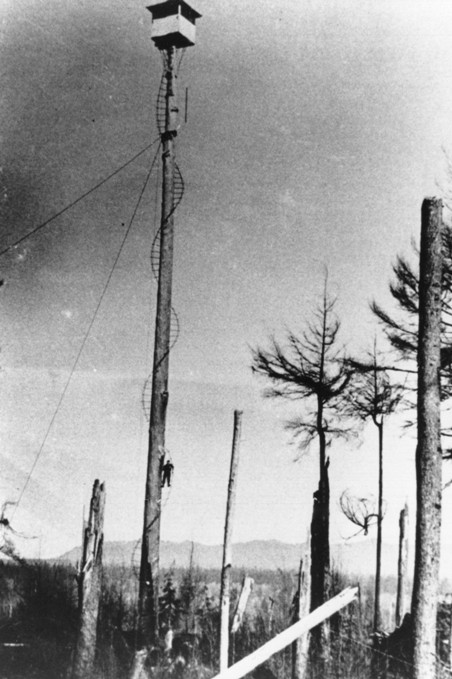
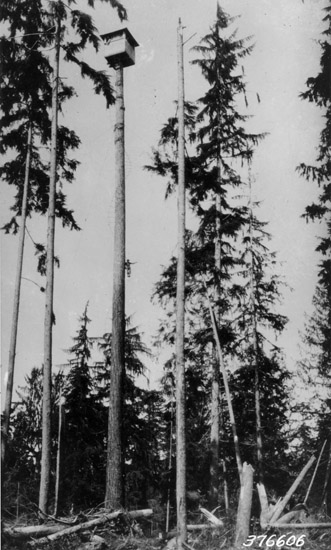
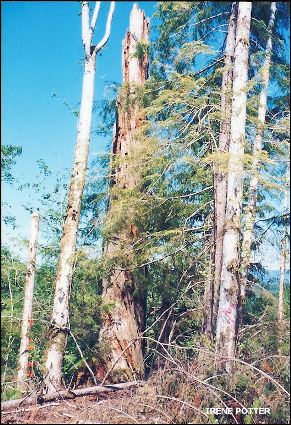
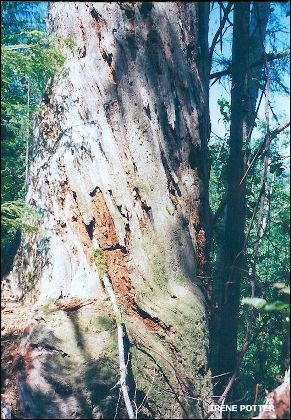
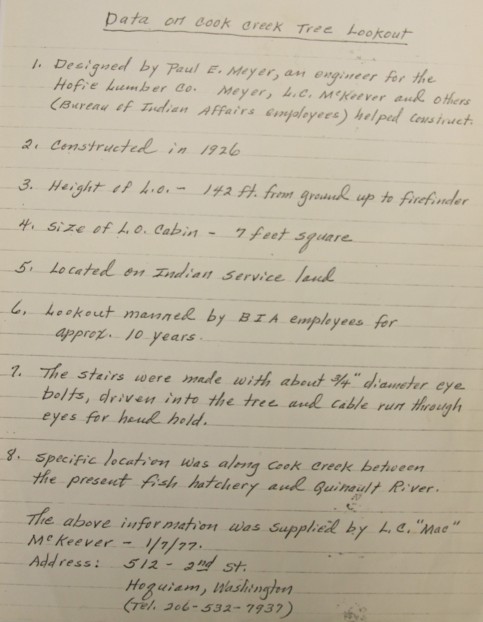

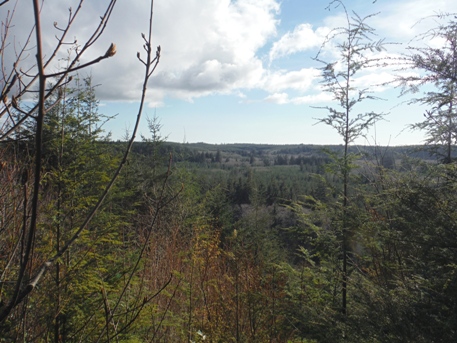
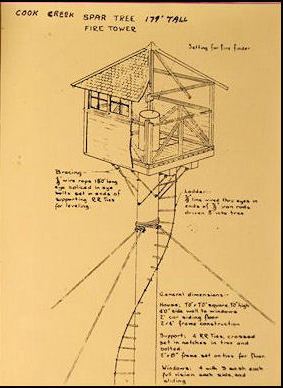
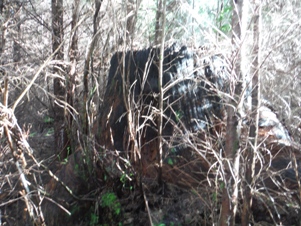
Above: Recollections of L.C. McKeever in 1977 (one of the builders of the lookout)
Left: The stump and new trees growing around it.
Cook Creek Tree Stump in 2017 (stump is cut just above the picture)
Looking North - June 18, 1935
Looking Southeast - June 18, 1935
Looking Southwest - June 18, 1935
Looking up
From a distance on the ridge top
The base
Man standing about a third way up the ladder
Around 1929
35 feet left in 1996 before area burned
Base in 1996
View nearby
Another side of the stump
Access map
1932 Olympic Trail Guide showing Cook Creek Lookout
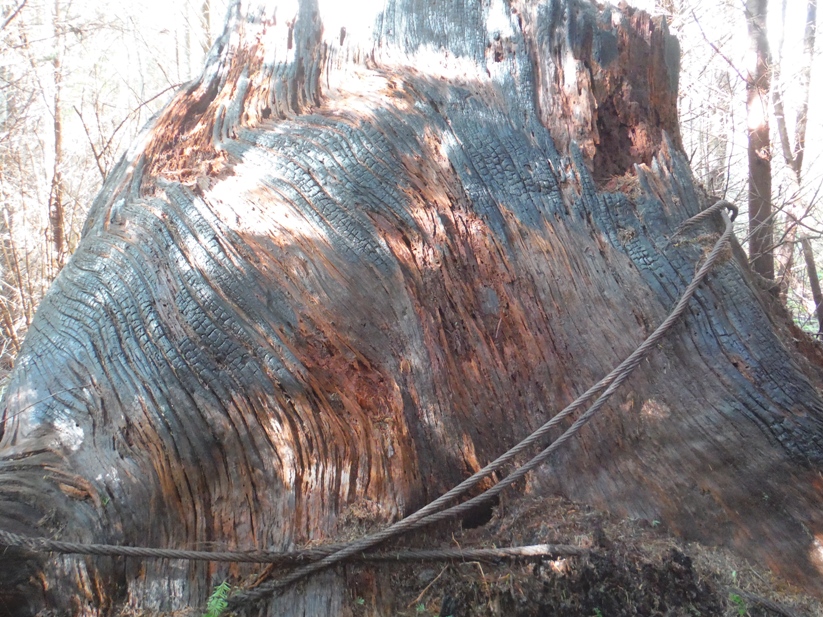
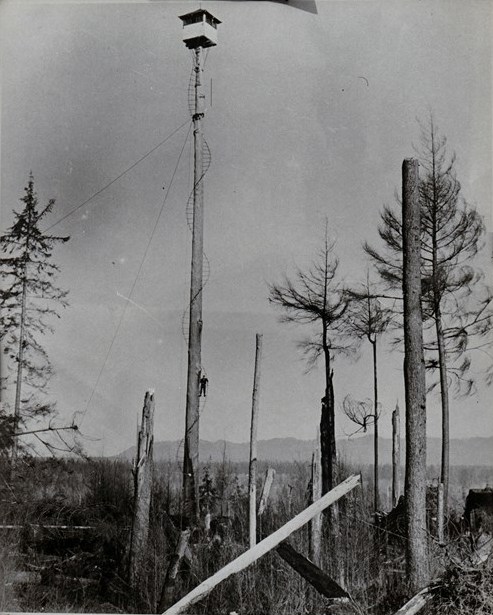
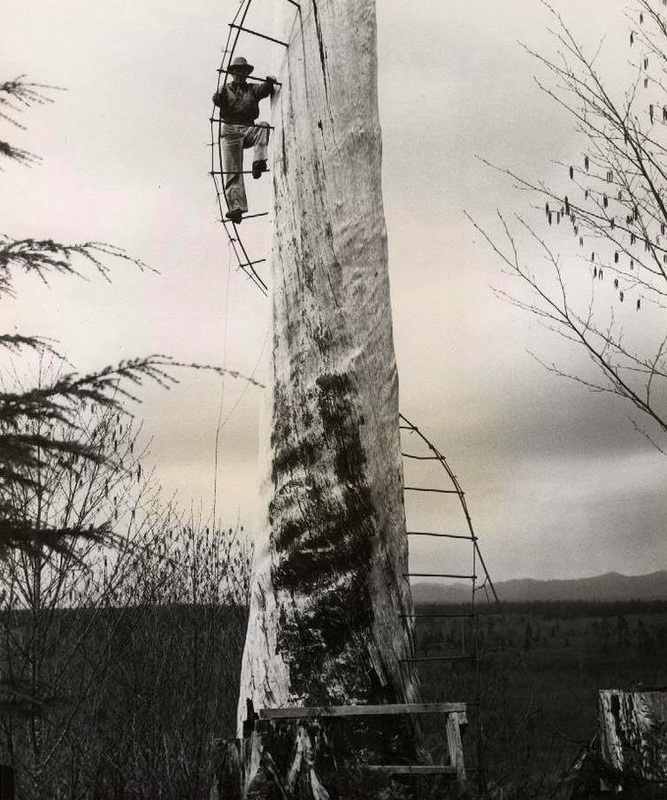
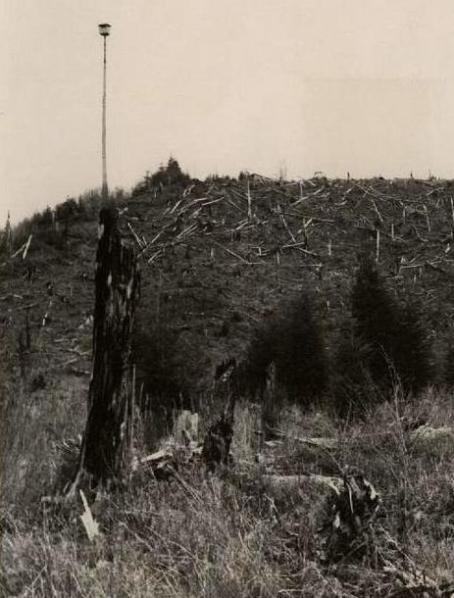
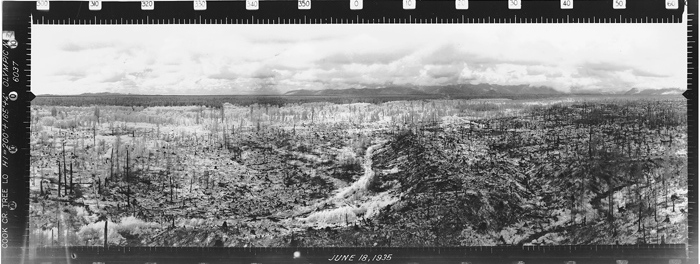
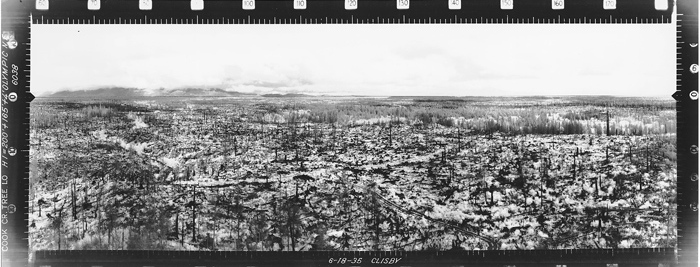
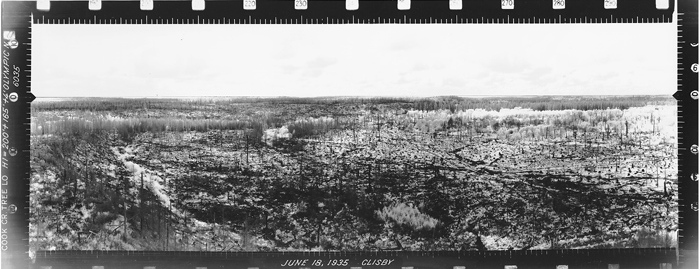
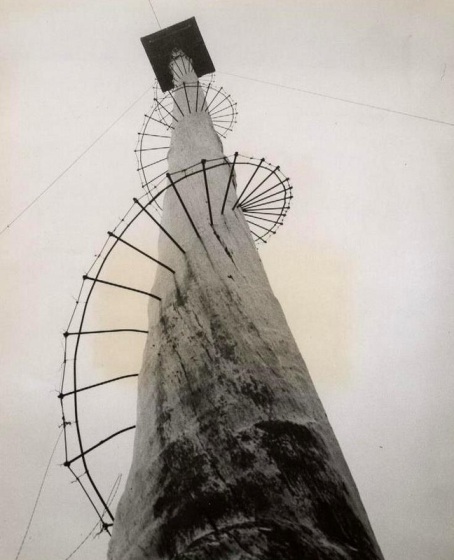
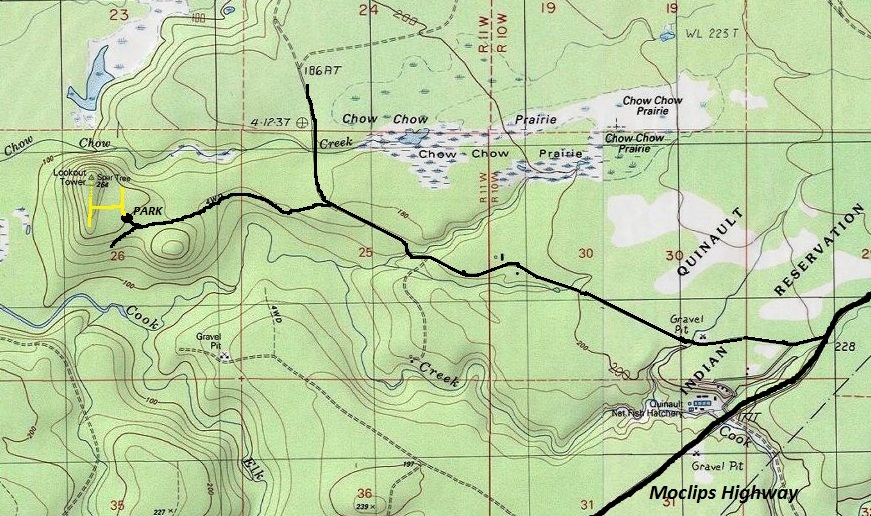
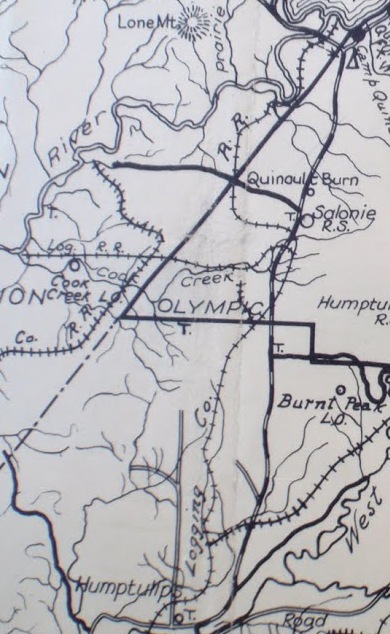

Below: The benchmark next to the stump.



















